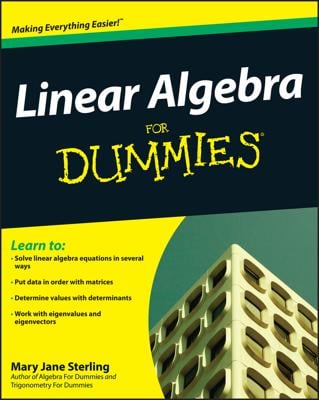The concept of divisibility — for example, 12 is divisible by 3 because 12 / 3 = 4, with no remainder — can also be described using the words factor and multiple. When you’re working with positive numbers, the factor is always the smaller number and the multiple is the bigger number. For example, 12 is divisible by 3, so
The number 3 is a factor of 12.
The number 12 is a multiple of 3.
Sample questions
The number 40 is divisible by 5, so which number is the factor and which is the multiple?
The number 5 is the factor and 40 is the multiple, because 5 is smaller and 40 is larger.
Which two of the following statements means the same thing as “18 is a multiple of 6”?
a. 6 is a factor of 18.
b. 18 is divisible by 6.
c. 6 is divisible by 18.
d. 18 is a factor of 6.
Choices a and b. The number 6 is the factor and 18 is the multiple, because 6 is smaller than 18, so a is correct. And 18 / 6 = 3, so 18 is divisible by 6; therefore, b is correct.
Practice questions
Which of the following statements are true, and which are false?
a. 5 is a factor of 15.
b. 9 is a multiple of 3.
c. 11 is a factor of 12.
d. 7 is a multiple of 14.
Which two of these statements mean the same thing as “18 is divisible by 6”?
a. 18 is a factor of 6.
b. 18 is a multiple of 6.
c. 6 is a factor of 18.
d. 6 is a multiple of 18.
Which two of these statements mean the same thing as “10 is a factor of 50”?
a. 10 is divisible by 50.
b. 10 is a multiple of 50.
c. 50 is divisible by 10.
d. 50 is a multiple of 10.
Which of the following statements are true, and which are false?
a. 3 is a factor of 42.
b. 11 is a multiple of 121.
c. 88 is a multiple of 9.
d. 11 is a factor of 121.
Following are the answers to the practice questions:
Which of the following statements are true, and which are false?
a. 5 is a factor of 15. True: 5 x 3 = 15.
b. 9 is a multiple of 3. True: 3 x 3 = 9.
c. 11 is a factor of 12. False: You can’t multiply 11 by any whole number to get 12.
d. 7 is a multiple of 14. False: The number 7 is a factor of 14.
b and c
You’re looking for something that says that the smaller number, 6, is a factor of the larger number (choice c) or one that says the larger number, 18, is a multiple of the smaller number (choice b).
c and d.
Factors are numbers you multiply to get larger ones, so you can say 50 is divisible by 10 (choice c). Multiples are the larger numbers, the products you get when you multiply two factors; you can say 50 is a multiple of 10 (choice d) because 10 x 5 = 50.
Which of the following statements are true, and which are false?
a. 3 is a factor of 42. True: 3 x 14 = 42.
b. 11 is a multiple of 121. False: The number 11 is a factor of 121.
c. 88 is a multiple of 9. False: You can’t multiply 9 by any whole numbers to get 88 because 88 / 9 = 9 r 7.
d. 11 is a factor of 121. True: 11 x 11 = 121.

